The soft light spills out from Laing’s room and illuminates our table. But other than that we’re surrounded by darkness. The storm clouds on the horizon from earlier haven’t advanced, and the night air is pure, as if there is not now or ever has been a contaminate in the world. I think about what Laing said about Marlene, and the blood above her eye, and about the time, before the disease, that Emily had helped me patch the bottom of our aluminum boat with tar that we had warmed up so that we could spread it over places the metal had rubbed thin from dragging the boat loaded with firewood across the shallow river behind our house, wood gathered from the uninhabited island, wood that we scavenged in the summer so we could burn it during the winter. And I remember the smell of that tar, and how difficult it was to remove the stains from Emily’s hands who, at age seven or eight, pretended they were something like tattoos for a while, or something even more primitive, markings, black markings, streaks and splotches that stayed sticky for days, collecting dust and lint and leaving smudges on her pillowcase and sheets.
A large brown moth lands on the table and begins walking in circles. Laing puts his hand on the table, palm up, and the moth keeps circling lazily and unsteadily and then manages to crawl into his palm. It’s wounded in some way, but who can say how? It’s just a moth, and yet to destroy it… to destroy it would be an unforgiveable act, and it’s as if Laing knows this too and so he gently raises his hand and watches the moth, its antennae twitching as if trying to detect the danger level and then it flies off, first toward the open motel room door and then back out into the black night. It was a small act of mercy, but intended for whom? I only say this because, thinking back on it now, Laing’s gesture — releasing the moth — seems inauthentic. There was something — how to put it? — rehearsed. That’s not the right word. Forced. There was something forced in Laing’s handling of the moth, almost theatrically forced, as if to suggest to me, Look, if you weren’t here to see this I’d smear the moth across the table .
“The film is only one frame long,” Laing says.
I understand he wants to move on.
“Then it’s not a film,” I say.
“It’s the only part of the film that survives.”
“Title?”
“ The Murderous King Addresses the Horizon . 1910. A fragment.”
Laing is sitting at the table now and he tells me about the film frame, which he produces from a yellow envelope from beneath the blue velvet chair. It’s actually not a film frame, but a paper print from the Library of Congress, Laing says, referring to the early method for securing copyright of films from the late 1800s and early 1900s. Rather than strike extra prints of films, paper versions were made, an opaque from the film negative printed onto various sorts of paper, which were coiled tightly and preserved. The frame that Laing produced was actually stolen, Edison told me later, from the vaults of the Renovare Company, which had been commissioned to convert the paper prints to 16 mm acetate safety film stock. An image from a forgotten film, by a forgotten director although, as Laing reminds me, the concept of the director was alien in early cinema, and more than likely it was the cameramen who dictated the composition of space within the shots and all sort of other decisions we now associate with the role of the director. In fact — and for some reasons he seems adamant on this point — early filmmaking was an intensely collaborative enterprise with interchangeable roles, so that there was no clear distinction between who did what at the various stages of production. What Laing calls the “assembly line” mode of Hollywood production, perfected during the studio era, didn’t exist yet and it was no surprise, Laing insists, that Hollywood’s method of production followed so closely and emerged at nearly the same historical moment as Henry Ford’s assembly line: film and automobile as imagined as a grouping of interchangeable parts assembled by a series of workers trained to do one or two jobs expertly and therefore alienated from the overall process of the entire project. But this, this early frame comes from a time before that, when filmmaking was still an organic enterprise and when films were created by small groups (“collectives” is the word Laing uses) of people working together to create a shared object.
Laing begins to spin out the narrative, the “secret history” of this particular fragment, the sole surviving ghost image of a film that someone had taken the time to transfer to a paper print and register at the Library of Congress.
“It’s a story about the woman, taking notes, at a wooden desk in a wide-planked, bright office in a film from 1910, her hair done up in the style of the day in the years before the ‘war to end all wars’ which, beginning just four years after this film frame, will claim millions. There is a man — stately, king-like — across the room from her, watching. With murderous intent, as I recall. He wears some sort of uniform. I’d swear it involves a Nazi arm band, blinking in blood red, but that’s impossible, of course, in 1910.
“There are so many details in the film frame, but which ones are important? Neither of them are looking directly at each other. He might be dictating; she might be taking notes. Or perhaps she is simply recording information, tallies that indicate some dark, bloody statistic. There is in fact — if you examine the frame closely, which I happened to do during the dead-time of my life then, after Marlene had accused me (falsely) of ‘unpardonable actions’ and subsequently exiled herself from me — nothing written at all on her pad of paper. There is the carved face on the wall above her head. There is his seat cushion. There is the overexposed window behind him, which is open. There are many objects on her desk whose meaning can only be guessed at. It’s not fair that we don’t know.”
Laing gets up from the table, goes into the motel room, and comes back with a yellowed folder, removes a stack of typed pages, and shuffles through them with the blank intensity of a person teleported back and forth through time so often that his very self becomes stretched into something that exists both then and now. The pages contain Laing’s theories about what happens after the frame, in the way that we sometimes wonder what happens in the moments right after the instant captured in a photograph and I’m struck for the first time by the degraded sadness of the whole enterprise. Laing and I talking about these destroyed films as if they mattered any more, or as if they ever mattered, and to make things worse, the black night accumulating around us with greater and greater force, as if leaking in from parts of the universe that carry with them a special kind of evil, the kind that we can’t even imagine, the kind that you can’t find in Blake or Milton or with telescopes trained at the cosmos or in particle colliders or in Indian mounds or even in the terrible things that one person will do to another person alone in a dungeon. There’s a stillness in the black night that surrounds us and Laing seems to respect this silence somehow and in that void we share I have a terrible thought: that one of the missing children is right now, at this very moment, aware of us out here on the motel landing and I too become aware of him, the boy chained to a tree, his bare chest pressed hard against the bark, forest mud stuffed into his ears and nose, a lantern hanging from a branch swaying beside him, a lodge in the distance with a yellow light on inside, the sound of a tractor engine coughing to life in the distance, and the boy’s thoughts running in a weird relay circuit between me and him. These thoughts come to me in a terrible rush so hard and fast and with such force that the image of the boy sticks to the inside of my skull.
Читать дальше
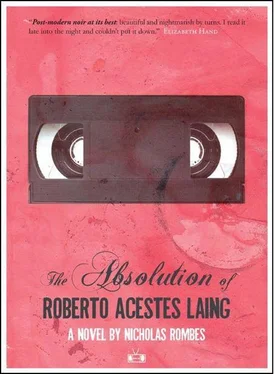
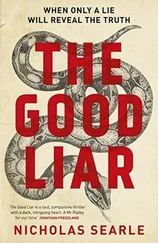


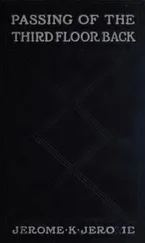


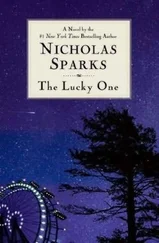

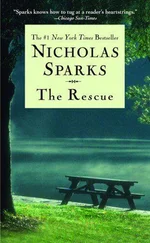
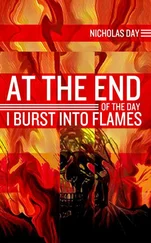

![Nicholas Timmins - The Five Giants [New Edition] - A Biography of the Welfare State](/books/701739/nicholas-timmins-the-five-giants-new-edition-a-thumb.webp)